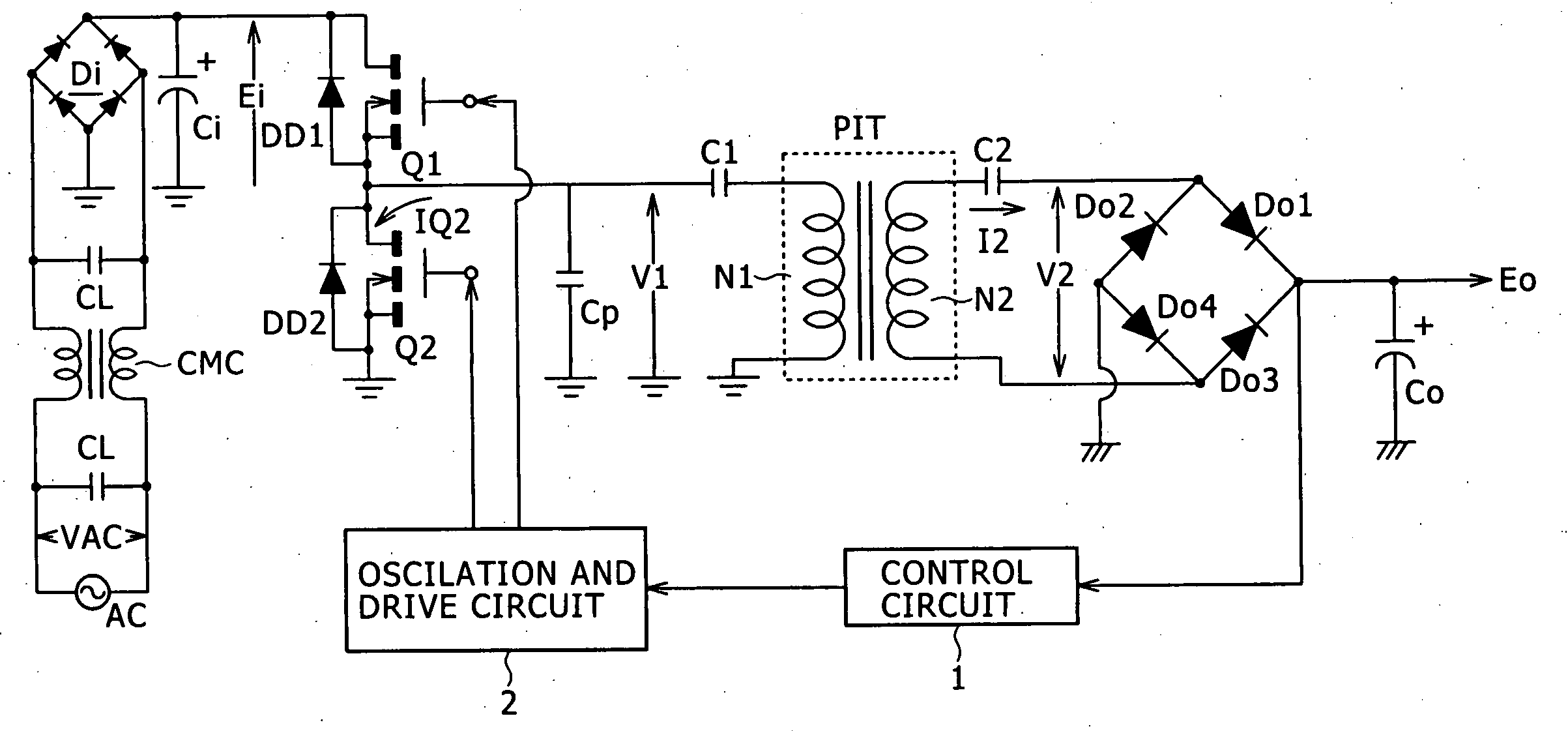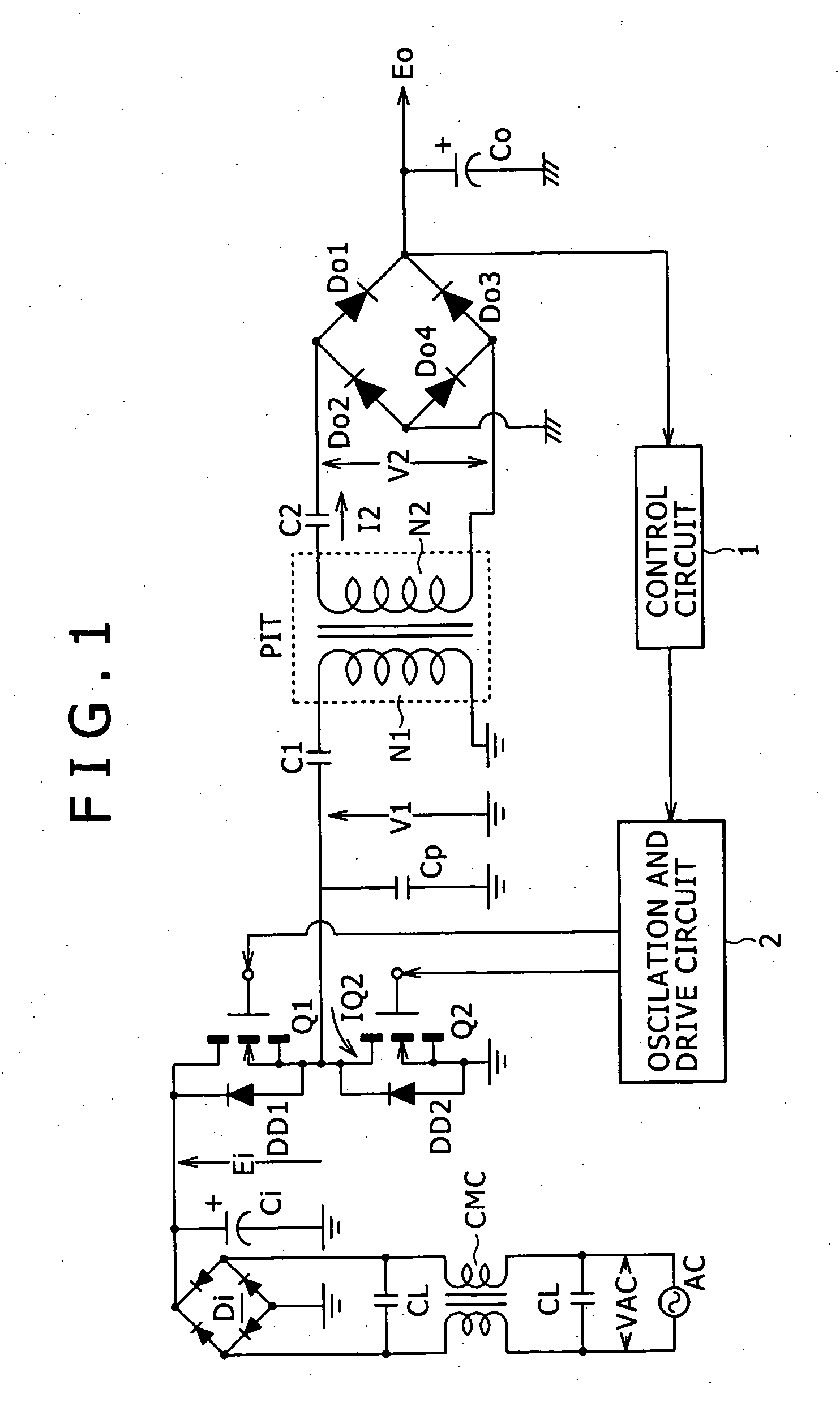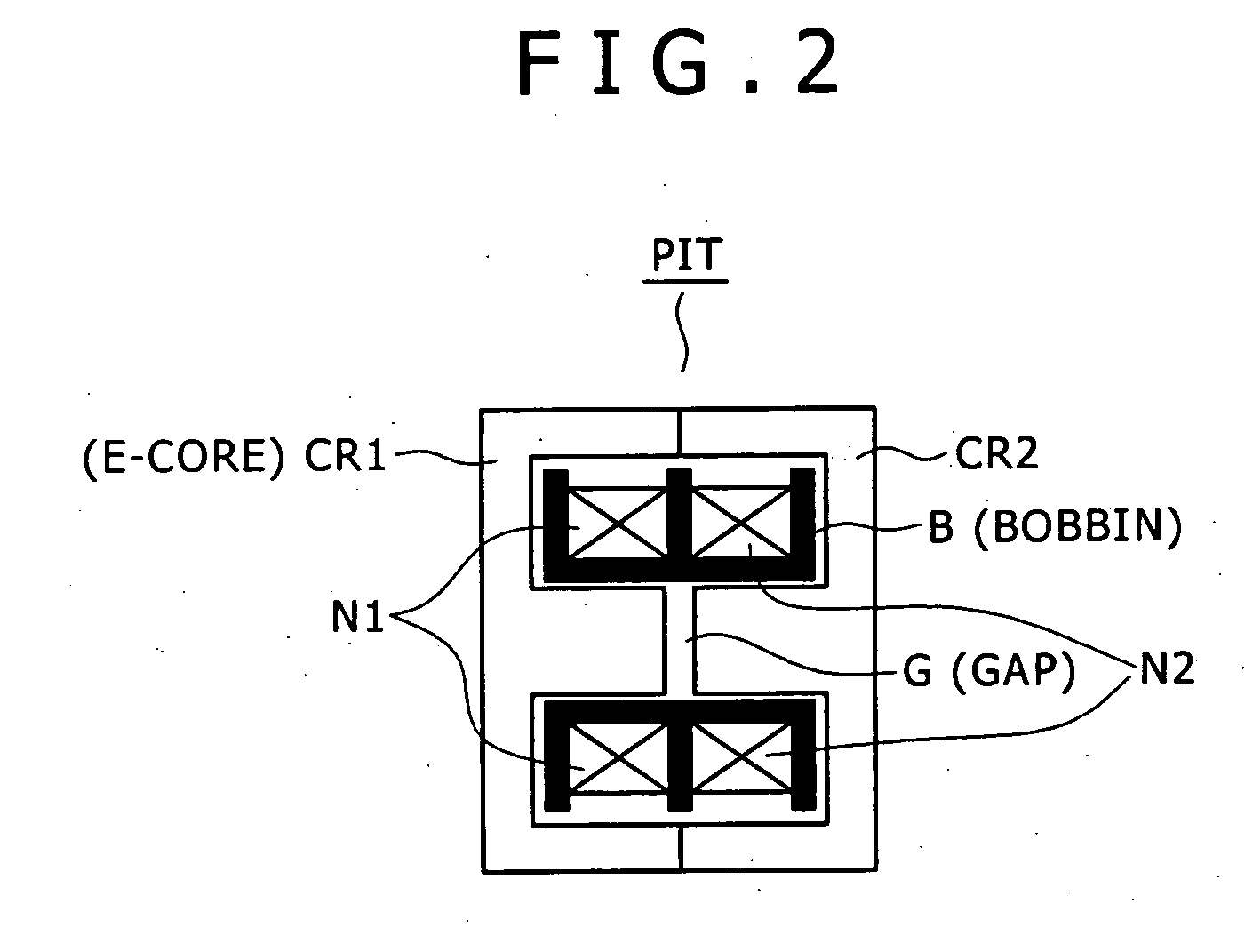Switching power supply circuit
- Summary
- Abstract
- Description
- Claims
- Application Information
AI Technical Summary
Benefits of technology
Problems solved by technology
Method used
Image
Examples
first embodiment
[0115]FIG. 1 is a circuit diagram illustrating a configuration example of a switching power supply circuit as the invention.
[0116] The power supply circuit shown in the drawing employs as its basic configuration, a configuration in which a separately-excited current resonant converter constructed by half-bridge connection is combined with a partial voltage resonant circuit.
[0117] In the power supply circuit, coupled to the commercial alternating-current power supply AC is a common mode noise filter formed of the filter capacitors CL and the common mode choke coil CMC.
[0118] To the commercial power supply AC, a full-wave rectifying and smoothing circuit formed of the bridge rectifier circuit Di and the smoothing capacitor Ci are coupled downstream from the noise filter.
[0119] The full-wave rectifying and smoothing circuit is fed with an AC voltage from the commercial power supply AC and performs full-wave rectifying operation, and thus the rectified and smoothed voltage Ei (DC inp...
second embodiment
[0235]FIG. 8 is a circuit diagram illustrating the configuration of a switching power supply circuit as the present invention.
[0236] The second embodiment in FIG. 8 employs full-bridge connection as the configuration of its switching converter, instead of half-bridge connection.
[0237] The same parts in FIG. 8 as those in FIG. 1 are given the same numerals, and description thereof will be omitted.
[0238] Referring to FIG. 8, in the full-bridge connection configuration, the half-bridge connected switching elements Q1 and Q2 are connected in parallel with half-bridge connected switching elements Q3 and Q4.
[0239] Damper diodes DD3 and DD4 that are body diodes are connected in parallel with the channel between the drain and source of the switching elements Q3 and Q4, respectively, similarly to the switching elements Q1 and Q2.
[0240] In addition, these full-bridge connected switching elements are coupled as follows to a primary-side series resonant circuit formed by connecting in serie...
third embodiment
[0250]FIG. 9 is a circuit diagram illustrating the configuration of a switching power supply circuit as the present invention.
[0251] The same parts in FIG. 9 as those in FIG. 1 are given the same numerals and will not be described below.
[0252] The third embodiment employs a configuration for switching the operation of the primary-side rectifier circuit between full-wave rectifying operation and voltage-doubling rectifying operation depending on the rated voltage of a commercial AC power supply. In addition, a voltage-doubler half-wave rectifier circuit is provided as the secondary-side rectifying and smoothing circuit.
[0253] On the primary side, a circuit formed of a smoothing capacitor Ci1 and a smoothing capacitor Ci2 that are serially connected is provided as the smoothing capacitor Ci that smoothes a rectified output from the bridge rectifier circuit Di provided for the commercial alternating-current power supply AC to thereby produce the rectified and smoothed voltage Ei. The...
PUM
 Login to View More
Login to View More Abstract
Description
Claims
Application Information
 Login to View More
Login to View More - R&D
- Intellectual Property
- Life Sciences
- Materials
- Tech Scout
- Unparalleled Data Quality
- Higher Quality Content
- 60% Fewer Hallucinations
Browse by: Latest US Patents, China's latest patents, Technical Efficacy Thesaurus, Application Domain, Technology Topic, Popular Technical Reports.
© 2025 PatSnap. All rights reserved.Legal|Privacy policy|Modern Slavery Act Transparency Statement|Sitemap|About US| Contact US: help@patsnap.com



